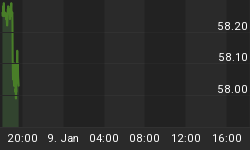U.S. employers added hundreds of thousands more new jobs last month than economists expected, with stock markets expected to react positively to the news but it will have to wait for Monday with Wall Street closed for Good Friday.
The Labor Department’s release of the March nonfarm payrolls report showed that hiring blew past expectations, with employers adding 916,000 more jobs than they cut last month.
Economists had forecast growth of 617,500, which even so would have been the best result since October.
It was nearly double the job growth from February, and it was the strongest since August last year, which added nearly a million and half jobs.
As states across the country lifted restrictions on businesses and (vaccinated) customers are returning to normal, service sector employers are the biggest contributor to the monthly payrolls increase.
Leisure and hospitality payrolls rose by 280,000, while most of those (some 176,000 jobs) came from hiring at restaurants, bars and other food service establishments. However, these industries remain more than 3 million payrolls short of their pre-pandemic levels.
Construction companies added 110,000 jobs, while arts, entertainment and recreation contributed 64,000 to the total. As students return to school, employment rose 126,000 in public and 64,000 in private education institutions.
Next month’s numbers could be even more positive than this month’s.
Chief U.S. economist for Bank of America, Michelle Meyer told the New York Times that the March report “reaffirms this idea that the economy is accelerating meaningfully in the spring”.
However, the Labor Department’s report showed that discrepancies in unemployment by race didn’t improve. The unemployment rate for Black Americans was 9.6% in March compared to 7.9% for Hispanics and 5.4% for whites.
Overall, during the last month, the unemployment rate fell 0.2% from previous month to 6.0%. However, the United States economy is still down around 8.4 million since the pandemic started and far from 3.5% in February last year. The U.S. economy is
According to some estimates, the U.S. labor market won't return to a pre-pandemic jobless rate before the end of 2023.
However, rising new infections could jeopardize further job progress in the coming months. New cases of COVID-19 rose 9% to more than 431,000 last week, the first time since January.
Despite the fact that 28% of the U.S. population has received at least one dose and 15.5% being fully vaccinated, the country is still reporting a weekly average of 970 Covid-19 deaths per day and 63,000 new cases.
Last week, Dr. Anthony Fauci, White House’s chief medical advisor blamed easing of business restrictions and increase or travel for the new cases rather than new variants of the virus.
"When you're coming down from a big peak and you reach a point and start to plateau, once you stay at that plateau, you're really in danger of a surge coming up. That's what we're starting to see," Fauci said.
















